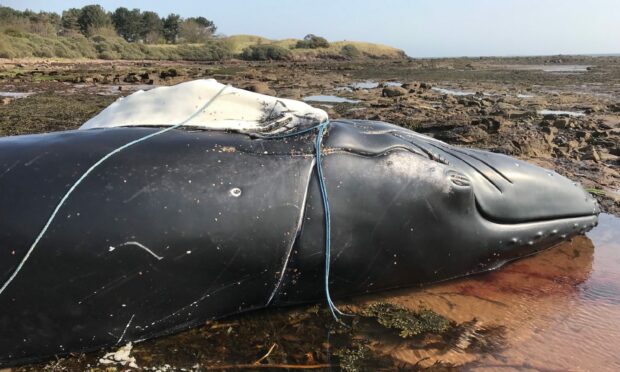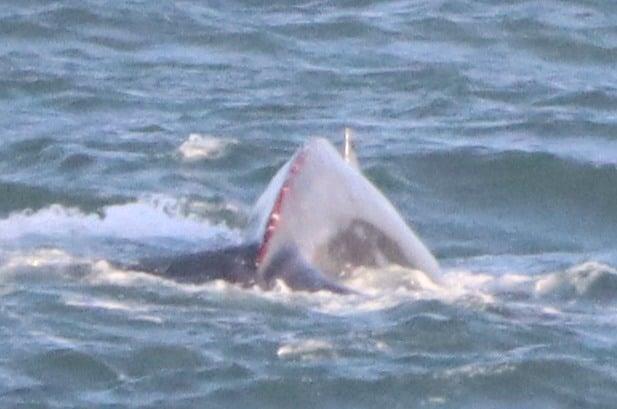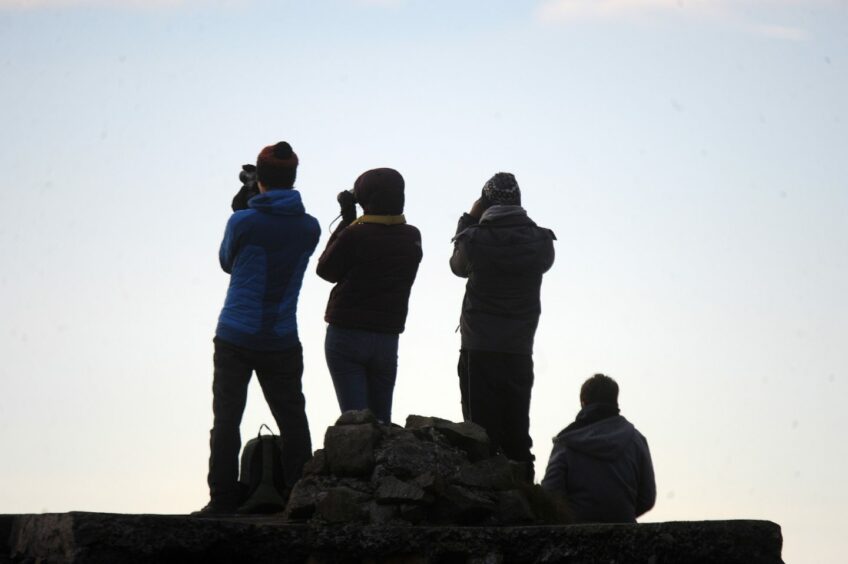Campaigners say ropeless technology could spare whales in the Firth of Forth from slow and painful deaths.
In 2019, a humpback which had mesmerised whale watchers along the Fife coast suffered what was described as a “particularly grim” demise.
It had become entangled in fishing rope, which had dug into its blubber.
And another humpback spotted recently in the Forth is believed to have been injured by fishing gear.
Creel ropes creating hazards around the British coast
It led to pressure group Blue Planet Society renewing its call to phase out the use of ropes in creel fishing.
“Between the creels and the buoy on the surface, you’ve maybe got a couple of hundred feet or more of rope,” said John Hourston from the society.
“There are literally hundreds of thousands of these around the British coast.
“It’s highly unlikely that a humpback whale will not encounter these lines and become injured, entangled, or even be killed by them.”
The Scottish Marine Animal Stranding Scheme (SMASS) collects information on all marine life that strand on the Scottish coastline.
SMASS data on entanglements has been highlighted as part of the Scottish Entanglement Alliance (SEA) project – a groundbreaking scheme aiming to address the issue.
NatureScot published a report into phase one of the project in December.
The authors said there was “significant drive to address the issue” among creel fishers.
Many in the industry described entanglement events as “stressful experiences”.
Minke whales are most often the victims of entanglement.
Other species caught up in fishing gear around Scotland have included basking sharks, porpoises, seals, turtles and even killer whales.
What is the solution? And is it feasible?
The Fife coast is fished commercially for prawns, crab and lobster.
Creels lowered to the estuary bed are attached to floating buoys by ropes to mark their location.
Blue Planet Society wants to see these ropes taken out of use.
But what is the alternative?
The Scottish Creel Fishermen’s Federation recommends the use of negatively buoyant rope – weighted rope which sinks instead of floats – to help prevent entanglements.
But John says ropeless technology is a better solution.
This involves the fishing gear being tethered to the sea bed until it is released by either a timer or acoustic signal.
“So far that has been the only positive development in the industry and it’s still at the testing stage.
“At this stage it’s very expensive.
“But what price do you put on a fully grown, mature humpback whale and the tourism that brings to a country like Scotland?”
‘Great big’ grants needed if ropeless technology is to be adopted
Creel fishers in the East Neuk of Fife are concerned about the ecological impact of their business.
But they say the cost of ropeless technology is prohibitive.
John believes it is in the interests of national governments to make grants backing such schemes available.
“Governments have to get involved because this is a natural resource.
“It’s a trade off. If you want to stop these animals being killed, then somebody is going to have bear that cost.
“Whether it’s the fishing industry or government subsidising it, it’s worth doing.
“The whales themselves are extremely valuable for all sorts of reasons.”
The NatureScot report said fishers were receptive to new ideas that could reduce entanglements “as long as they are practical and there are no financial implications”.
But Billy Wood from Fishermen’s Mutual Association (Pittenweem) fears ropeless technology “just wouldn’t work”.
“I’ve looked into it. It’s just not there yet. It’s a long way away.
“And it just wouldn’t work.
“I’m not saying it would never happen. But right now it’s not there yet.
“It’s also very expensive.”
He says it would take a “great big grant” scheme to convince fishermen to adopt the technology.
But he adds that animal welfare is high on the agenda of East Neuk creel fishers.
“They are more into that now than ever.
“We have all the phone numbers, if there’s ever an issue.”
He says most fishers in the area already use weighted ropes.
“The reason for that is obviously for entanglement, and for entanglement in other boats’ propellers as well.
“It’s on their own interest to do that.”












